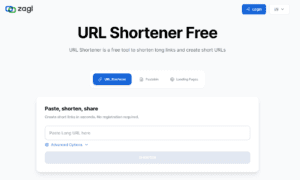Influencer marketing has certainly become a major development on how brands reach their target audience in today’s world that is ruled by the internet. From small influencers who focus on specific niches to celebrities who target the masses, this is a very common marketing strategy nowadays. In this article, you will learn about how businesses can take advantage of influencer marketing and brand marketing techniques.
What is Influencer Marketing?
Influencer marketing is when an individual with a substantial following works with a brand to help market products. Influencers seamlessly weave brand promotions into their content, which makes the advertisements less intrusive and more appealing to the audience.
This marketing approach thrives on trust, which is its greatest strength. Unlike traditional advertisements that use celebrity endorsements, Instagram and Snapchat Influencers use influencer marketing to promote goods, which is much simpler and easier. A fitness influencer can promote a brand of supplements to their audience while a technology vlogger can promote the latest smartphones to their followers. The major component that is different is the personal touch that an influencer gives while speaking about a particular brand which makes their impact much stronger.
The Benefits of Influencer Marketing
Why are brands investing in influencer marketing? Here are some compelling reasons:
Enhancing Brand Trust and Authenticity
Consumers are more likely to trust recommendations from influencers they follow rather than traditional advertisements.
Targeted Marketing and Higher Engagement
By collaborating with influencers in specific niches, brands can reach a relevant audience, ensuring higher engagement and conversion rates.
Increased Brand Visibility
Influencer-generated content exposes brands to thousands or even millions of potential customers, helping build brand awareness.
Better Conversion Rates
Studies show that influencer recommendations drive higher conversion rates than traditional marketing. Additionally, brands use AI-driven SEO strategies to optimize content visibility, ensuring maximum impact.
Steps to Build a Strong Influencer Marketing Strategy
To maximize influencer marketing success, brands should follow a strategic approach:
- Define Clear Objectives
Determine whether your goal is brand awareness, lead generation, or product sales. - Identify the Right Audience
Understanding your target demographics ensures alignment with the right influencers. - Select Suitable Influencers
Prioritize engagement and authenticity over follower count when choosing influencers. - Develop Engaging Content Collaborations
Work closely with influencers to create genuine content that resonates with their audience. - Measure Performance and Optimize
Use analytics tools to track metrics like engagement, traffic, and conversions to refine future campaigns.
Common Mistakes to Avoid in Influencer Marketing
Avoid these pitfalls to ensure success:
- Choosing Influencers Solely Based on Follower Count
A high follower count doesn’t always equate to engagement or impact. - Lack of Clear Objectives
Without defined goals, campaigns may lack direction and effectiveness. - Overly Promotional Content
Audiences value authenticity. Content that feels forced may harm credibility. - Failure to Track Performance
Without tracking, brands cannot accurately measure the success of their campaigns.
Measuring the Success of Influencer Marketing Campaigns
Tracking performance is crucial to refining strategies. Here are key methods:
- Analyze Engagement Metrics – Monitor likes, comments, and shares.
- Use Unique Tracking Links and Promo Codes – Helps attribute conversions to influencer campaigns.
- Monitor Website Traffic – Use tools like Google Analytics to assess referral traffic.
- Leverage Social Listening Tools – Tools like Sprout Social help track brand mentions and audience sentiment.
Influencer Marketing Tools to Streamline Campaigns
Using the right tools can simplify influencer marketing efforts. Here are some top picks:
- Upfluence – AI-driven influencer discovery and campaign tracking.
- GRIN – Best for e-commerce brands, integrating with Shopify.
- HypeAuditor – Provides deep analytics on influencer performance.
- Heepsy – Ideal for small businesses searching for niche influencers.
- CreatorIQ – Enterprise-level solution for large-scale influencer campaigns.
- BuzzSumo – Helps identify trending content and key industry influencers.
- NinjaOutreach – CRM-style tool for managing influencer outreach.
- Klear – Offers robust influencer analytics and audience insights.
Conclusion
Through influencer marketing, brands are integrating trust, engagement, and conversion in a whole new approach. And, from a new business to a brand that is already a household name, using Klear will help improve positioning and reach. With careful selection of influencers, performance monitoring, and consideration of common mistakes, this marketing tool can achieve the greatest effectiveness.































